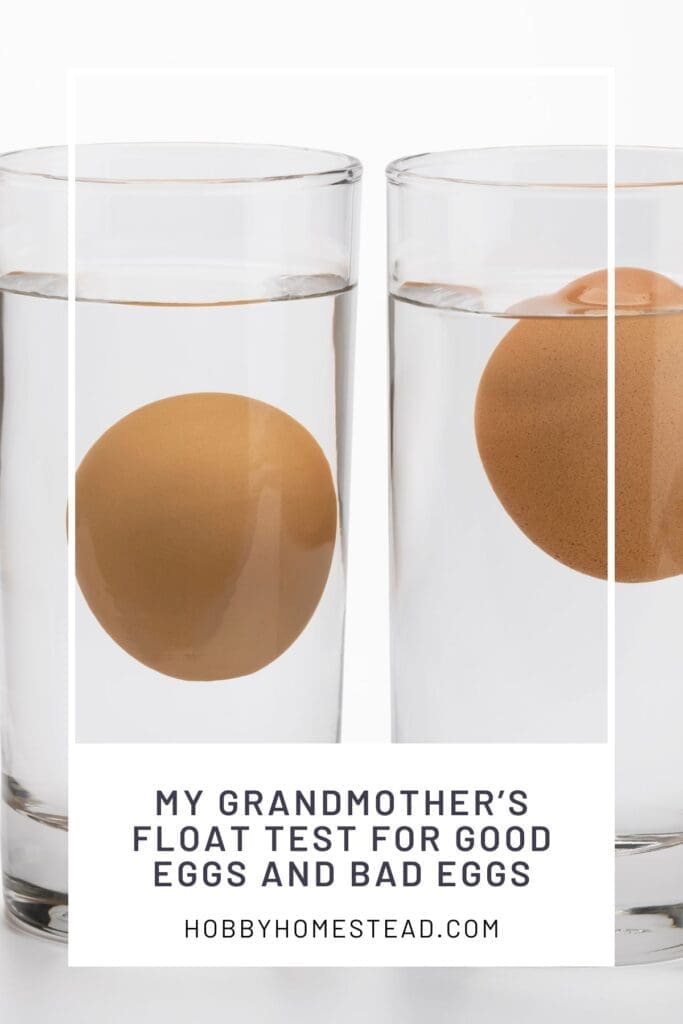Last updated on April 25th, 2025 at 09:58 am
If you are dreaming of a lush and thriving garden but not sure where to start, taking steps to plan the perfect garden is the key to success. A well-thought-out garden isn’t just about planting flowers or vegetables. It’s about designing a space that flourishes with the right plants, soil, and layout. From choosing the best location to mapping out your planting beds.
Planning Garden
Planning may seem like a daunting task, but with a few simple steps, you can create your dream garden—whether it’s a kitchen garden, a perennial garden, or a flower garden. Let’s dive into the best tips for garden design and layout, ensuring a successful vegetable garden from the very first planting.
Let’s talk about everything you need to turn your garden from a plot to paradise.
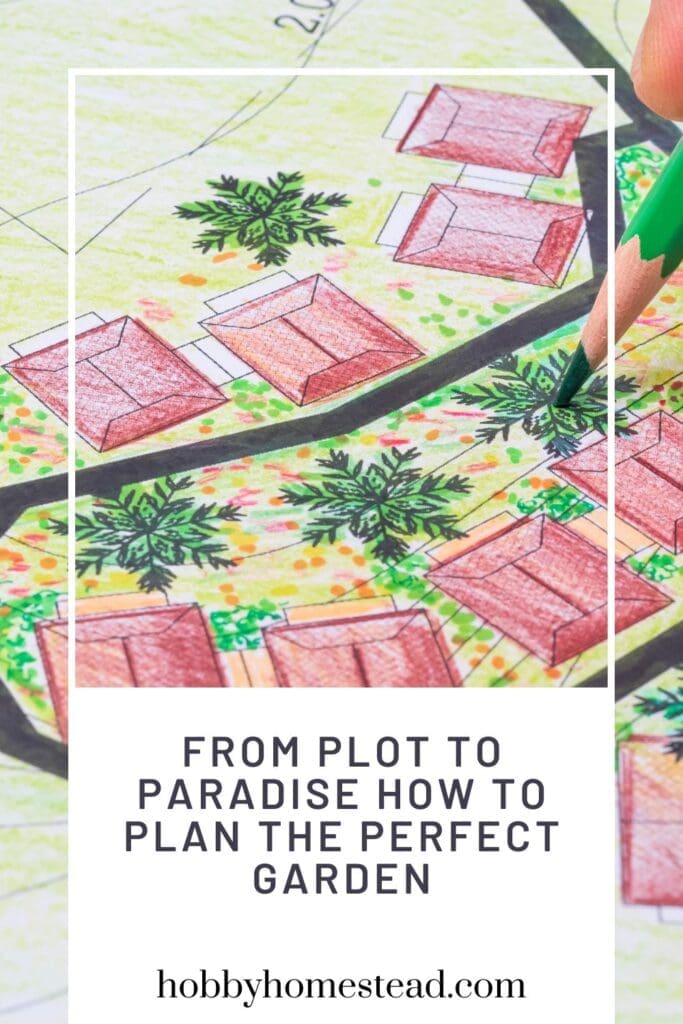
Find Your Garden’s Starting Point
The first thing to consider is your garden area. Take note of the outdoor space you have available, including any fixed objects like sheds, fences, or pathways. Do you have a small garden, a large homestead garden, or something in between?
If you’re working with small spaces, raised garden beds or square foot gardening are great ideas that allow for an efficient use of space. Raised beds not only help maximize production but also improve drainage and soil quality. If you have plenty of space, consider dividing it into different areas for vegetable beds, cut flowers, and perennial herbs.
A garden planner is a great tool for mapping everything out. Using graph paper or a digital tool with a free trial can help you take accurate measurements and design your garden layout effectively.
Know Your Climate and Growing Conditions
Your hardiness zone and soil type will determine what you can grow successfully. Check your zip code to find your last frost dates and length of your growing season. If you have a short growing season, focus on cool-season crops in early spring and warm-season crops after the last frost.
Understanding full sun and shade requirements is also essential. Most vegetable plants thrive in a sunny spot, while some native plants and perennial herbs can tolerate partial shade. If you have a cold frame, you can extend your season into late winter and late summer, giving you an additional space for growing.
Plan Your Garden Layout for Maximum Success
A good design ensures easy access to plants for weeding, watering, and harvesting. If you’re using raised beds, make sure the back of the beds is reachable without stepping on the soil. Straight rows work well in larger spaces, while square foot gardening is a good choice for small gardens.
Crop rotation is one of the important things for maintaining healthy soil. Avoid planting the same vegetable plants in the same spot next year—instead, rotate plant families across different areas of your garden to prevent soil depletion and pests.
Consider adding pathways with wood chips or mulch for easy access, and make room for an outdoor room where you can relax and enjoy your garden.
When Planning a Garden, Choose the Right Plants for Your Needs
Think about what you want to grow. Do you want a vegetable garden to make tomato sauce, or a flower garden for beauty and pollinators? Create a list of plants based on your family’s eating habits and specific needs.
When selecting seeds, read seed packets carefully to check growing season length, best use of your space, and spacing requirements. Order from seed catalogs in late winter so you’re ready for early spring planting.
If you’re new to gardening, start small. A first-year garden should be manageable and enjoyable—you can always expand next year!
Traditional Row Gardening and Raised Bed Gardening
Plan the Perfect Garden is an exciting and rewarding process, but choosing the right layout is key to success.
Two of the most popular methods are Traditional Row Gardening and Raised Bed Gardening, each offering unique benefits depending on space, soil quality, and personal preference.
Row gardening is ideal for large-scale planting, allowing easy access for maintenance, while raised beds provide better soil control and are perfect for smaller spaces or poor ground conditions. In this guide, we’ll explore how to plan a garden using these two methods, covering layout, how much to plant, symbiotic planting, and essential tips to help you grow a thriving garden.
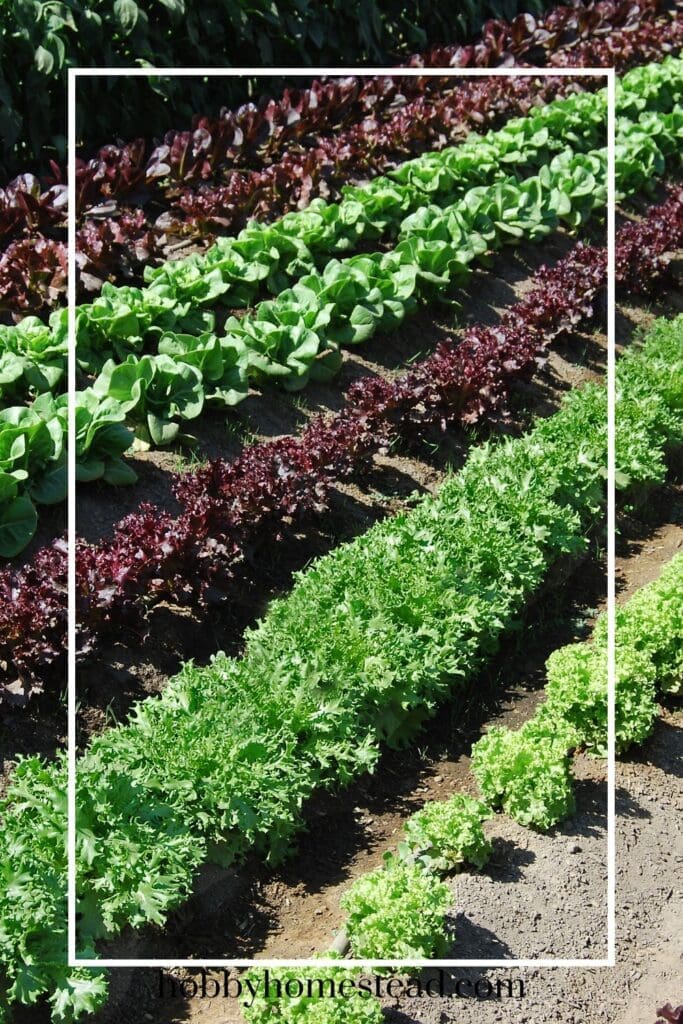
What is Row Gardening?
Traditional row gardening is a classic method where plants are arranged in long, straight rows with walking paths in between. Ideal for larger spaces, this approach allows for easy access, efficient watering, and organized crop rotation. It works well for vegetables like corn, beans, and potatoes that require ample space to grow.
To set up a traditional row garden, choose a sunny location, till the soil to improve aeration, and add compost for nutrients. Rows should be spaced based on plant size, with taller crops placed to avoid shading smaller ones. Regular weeding and watering are essential since exposed soil can dry out quickly. Drip irrigation or soaker hoses can help maintain moisture while reducing waste.
Traditional row gardening is perfect for those with plenty of land and a desire for structured, large-scale planting. With proper planning and maintenance, this method yields abundant harvests season after season.
How Our Row Gardening Experiment Worked
The main issue that arose with our experiment into row gardening is that it was extremely hard to keep up with the weeds with a larger garden. It is difficult for just one person to care for a larger garden, especially if they work a full-time job as well. Our advice? Make sure you choose a garden size compatible with those who will be caring for it. Our garden was about 300 square feet. A single person could more easily care for a garden 150 square feet or less.
We also wasted a lot of space with plants that needed climbing structures. We did not put them over the plants correctly and it made quite a tangled mess. Instead, I would plan for less vining and climbing plants in the main garden or possibly plant them along the garden wall.
It’s also better to neatly map out your garden because we ended up planting additional tomato plants later in the year, resulting in going back and forth all over the garden to harvest them.
They were also a nuisance to step around. Careful planning of how much of each plant you need and then where to place them in the garden would really have helped us.
What is Raised Gardening?
Raised bed gardening is a versatile and efficient method where plants grow in contained beds filled with nutrient-rich soil. These beds, typically framed with wood, stone, or metal, allow for better drainage, improved soil quality, and easier weed control. Raised beds are ideal for small spaces, poor native soil, and gardeners who prefer less bending and kneeling.
To set up a raised bed, choose a sunny location and build frames 12-24 inches deep, ensuring they are no wider than four feet for easy access. Fill them with a high-quality soil mix, including compost for added nutrients. Plants can be spaced more closely than in traditional gardens, maximizing yields. Mulching and drip irrigation help retain moisture and reduce maintenance.
This method is perfect for growing vegetables, herbs, and flowers, offering greater control over soil conditions and extending the growing season by warming up faster in spring.
This year we are going to experiment with raised bed gardening as well as row gardening. Plans for our raised beds are currently being drafted. Let’s discuss how to plan crops for our various garden styles.
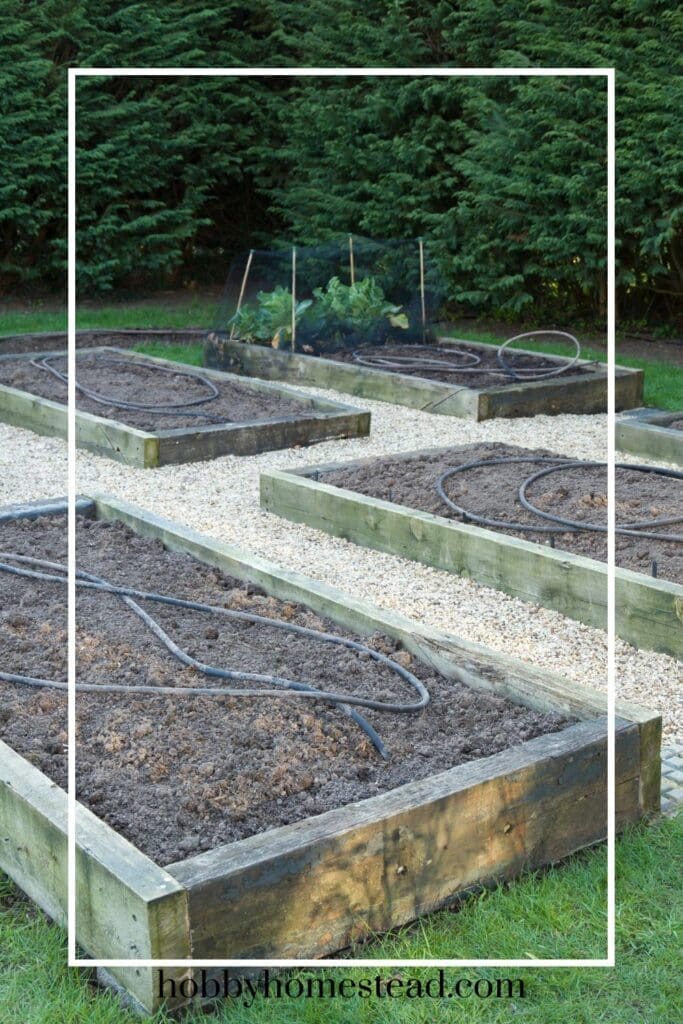
How to Plan a Garden Layout Step by Step
- Measure the area. If you’re using raised beds, you may already know the size.
- Sketch the area onto paper, graph paper, or use software like excel.
- Determine what you want to grow this year.
- Understand the spacing requirements for each type of plant you wish to grow.
- Determine the spacing you want for walking paths. We have learned that wider is better.
- Calculate how much space you need per plant variety. For example, a plant requiring 24 inches of spacing between plants would mean you could plant about 4-5 of them in a 10 foot row. You can always plant a few more than necessary and then thin them out by plucking a few out of the ground after they have germinated
- Use a measuring tool on your sketch and create symbols or text to mark the places your varieties will go. You could even color code it.
- Get row markers to mark off your actual garden area.
- Plant your vegetable or flower garden based on your plans. Doesn’t have to be perfect as long as you mark what is in your actual garden area.
Choosing Plants for your Vegetable Garden
Selecting the right plants for your vegetable garden depends on several factors, including climate, space, and personal preference. Here’s how to make the best choices:
Consider Your Climate & Growing Season. Choose plants suited to your USDA hardiness zone and the length of your growing season. Warm-season crops (like tomatoes and peppers) need heat, while cool-season crops (like lettuce and broccoli) thrive in cooler temperatures.
Assess Your Space. Compact gardens or raised beds benefit from space-saving crops like bush beans, while large gardens can accommodate sprawling plants like pumpkins.
Grow What You Eat. Focus on vegetables your family enjoys maximizing garden usefulness.
Companion Planting & Crop Rotation. Select plants that work well together and plan for rotation to prevent soil depletion and pests.
Consider Maintenance & Yield. Some crops, like zucchini, produce abundantly, while others, like carrots, take longer to mature.
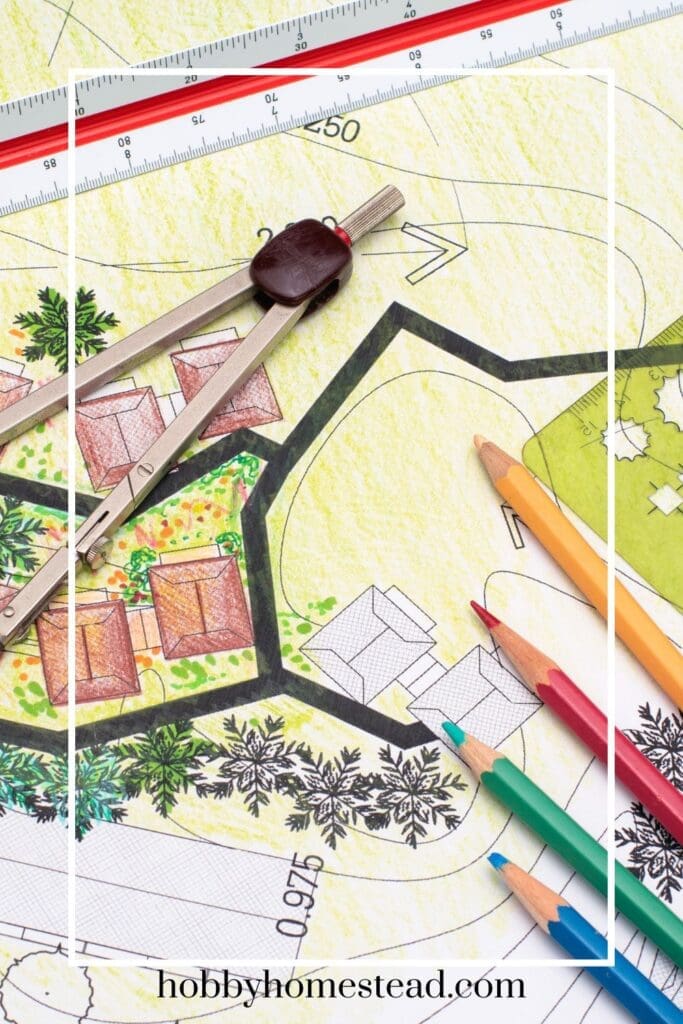
How to Decide How Many of Each Plant
Household Size & Consumption. Estimate how much your family eats and whether you want extra for preserving. (E.g., one tomato plant yields around 10-15 lbs.)
Available Space. Use plant spacing guidelines to determine how many will fit without overcrowding.
Succession Planting. Stagger plantings of fast-growing crops like lettuce and radishes to ensure a continuous harvest.
Preservation Needs. If you plan to can, freeze, or dry produce, plant extra high-yield crops like tomatoes, peppers, and beans.
Trial & Adjustment. Start with a reasonable amount, take notes on yield and usage, and adjust in future seasons.
Companion Planting (Symbiotic Planting)
Companion planting is the practice of growing certain plants together to enhance growth, deter pests, improve soil health, or maximize space. Some plants have natural properties that benefit others when planted nearby, creating a more productive and balanced garden.
Benefits of Companion Planting
- Pest Control. Some plants, like marigolds, deter harmful insects, while others attract beneficial predators.
- Improved Growth. Certain combinations, like tomatoes and basil, can enhance flavor and yield.
- Soil Enrichment. Legumes (like beans and peas) fix nitrogen in the soil, benefiting nitrogen-hungry plants like corn.
- Efficient Space Use. Tall plants provide shade for sun-sensitive crops, while ground-covering plants reduce weeds.
Examples of Companion Planting
- Tomatoes & Basil. Basil repels pests and enhances tomato flavor.
- Carrots & Onions. Onions deter carrot flies.
- Corn, Beans & Squash (Three Sisters). Beans fix nitrogen, corn provides support, and squash shades the soil.
Companion planting helps create a healthier, more sustainable garden with less reliance on chemicals.
Why is crop rotation important in gardening?
Crop rotation is crucial in a vegetable garden because it helps prevent soil depletion, reduces the buildup of pests and diseases, and improves soil health.
Different plants have varying nutrient needs, and rotating crops ensure that no single nutrient is overused in one spot. It also disrupts the life cycles of pests that target specific plants, minimizing the risk of infestations.
Additionally, rotating plants helps maintain soil structure and reduces the need for chemical fertilizers, promoting a more sustainable and productive garden over time. It’s an easy yet effective practice for long-term garden success.
How to Water a Vegetable Garden?
Here are five different ways to water a vegetable garden:
- Hand Watering with a Hose or Watering Can. Ideal for small gardens, hand watering gives you control over how much water each plant receives. It’s best done early in the morning to reduce evaporation.
- Drip Irrigation. Efficient and water-saving, drip irrigation delivers water directly to the plant roots through tubing and emitters. It minimizes water waste and keeps foliage dry, reducing disease risk.
- Soaker Hoses. A great option for rows of plants, soaker hoses release water evenly along their length, slowly soaking the soil. They conserve water and prevent surface runoff.
- Sprinkler System. Suitable for larger gardens, sprinklers distribute water over a wide area. Choose ones with adjustable settings to avoid over-watering or wetting plant leaves, which can promote fungal growth.
- Rain Barrels. Collecting rainwater in barrels to use in your garden is an eco-friendly option. It reduces your water bill and provides plants with fresh, untreated water.

Planning a vegetable garden involves thoughtful consideration of plant selection, spacing, and crop rotation to ensure a successful and sustainable harvest.
Whether you choose traditional row gardening or raised beds, understanding your space, climate, and the needs of your plants will set you up for success.
By carefully choosing what to grow and how much, as well as incorporating practices like crop rotation and companion planting, you’ll enjoy a bountiful and healthy garden season after season.
With a little planning and care, your garden can thrive and provide fresh, homegrown produce for months to come.


